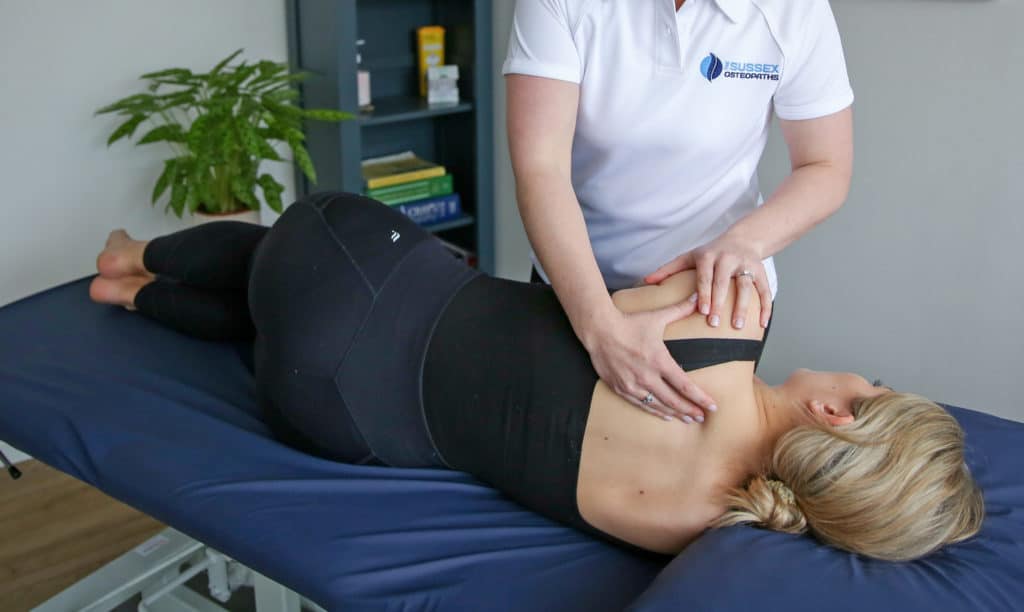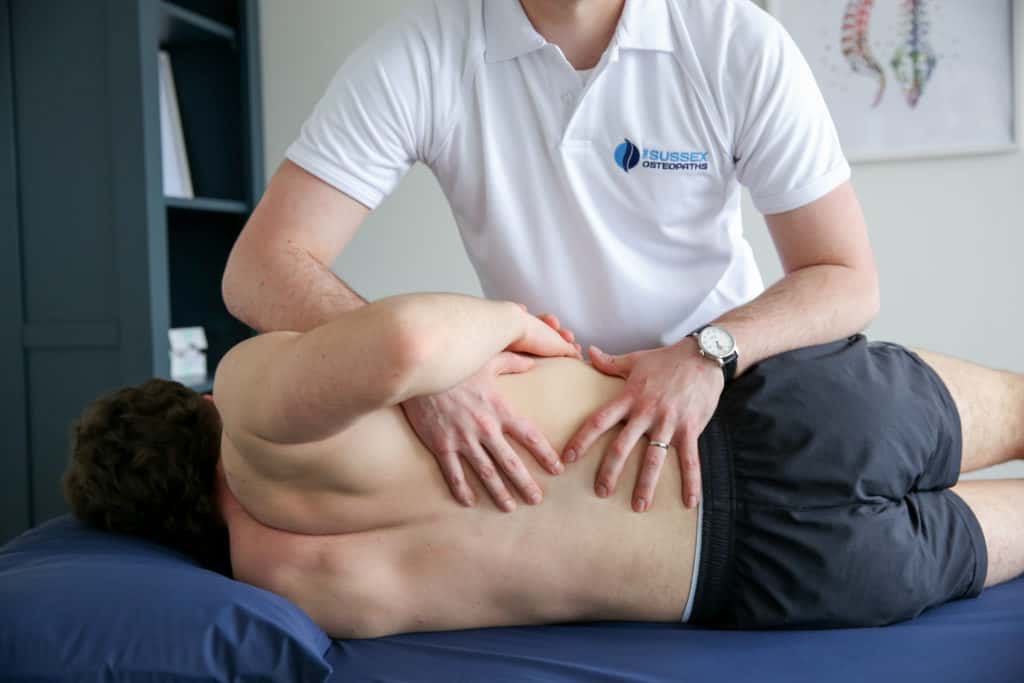Osteopathy is a form of hands-on manual therapy which complements mainstream modern medicine. We utilise a wide range of effective treatment options including joint manipulation, articulation and deep tissue massage. At the Sussex Osteopaths we are patient centred, meaning that we focus on you. Every patient is different and so too is their condition, that is why we don’t believe in generic treatment plans, but would rather tailor your treatment according to you specific needs.
Osteopathy is a gentle yet effective way of identifying and treating imbalances and restrictions in the body. Due to its gentle and adaptable approach, osteopathic treatment is suitable for almost everyone. From children and teenagers to adults and our senior citizens and from the desk-based office worker to the elite-level athlete, osteopathy can help in all ages and stages of life. Osteopaths can treat acute and chronic conditions and help the patient prevent the problem from reoccurring.

Osteopathy Can help with the following
Osteopaths are best known for treating back and neck pain, and for good reason… We’re very good at it! However, we also effectively treat every other muscle and joint in the body too. As osteopaths, we believe the whole body must work as a functional unit. We therefore take a holistic approach to identify the root cause of your problem.

Osteopathy is a great treatment option for patients with:
What to Expect
Your initial consultation will last up to one hour. In this time, we will ask you questions regarding your symptoms, general health and activities and lifestyle. This complete medical history will allow us to understand better the pain and problems you have been experiencing as well as how the area was injured, what aggravates it and what you do to ease the pain. It will also allow us a better overview of your entire body to determine if osteopathy is the best treatment for you. If osteopathy is not suitable, we can refer you to your GP or request imaging (such as X-rays, MRIs, etc.) as needed.
It is best to wear something that you are flexible and comfortable in. It is ideal if we can see the area affected, but if you are not comfortable with this, it is not necessary. We will examine your posture, muscles, joints and tissue health. We may ask you to do some simple movements to aid this assessment. Once we have reached a diagnosis, we will explain this to you and discuss a treatment plan that is suitable for you. This treatment plan may also include exercises, diet and lifestyle changes.
We will then move on to the hands-on treatment part of the initial appointment. Osteopathy is not usually painful, however, as we are often working on painful or injured areas of the body, it is not uncommon for there to be slight discomfort or tenderness during some parts of the treatment. Your osteopath will communicate with you during your appointment to ensure that you are happy and comfortable throughout.
After your appointment you will hopefully feel fantastic! Most of our patients do! You may however feel a little tired or achey, this is usually a sign that your body is doing what it needs to in order to heal the injury. If you have any concerns before or after your appointment, please do not hesitate to contact us and one of our highly qualified professionals will be more than happy to talk to you.
